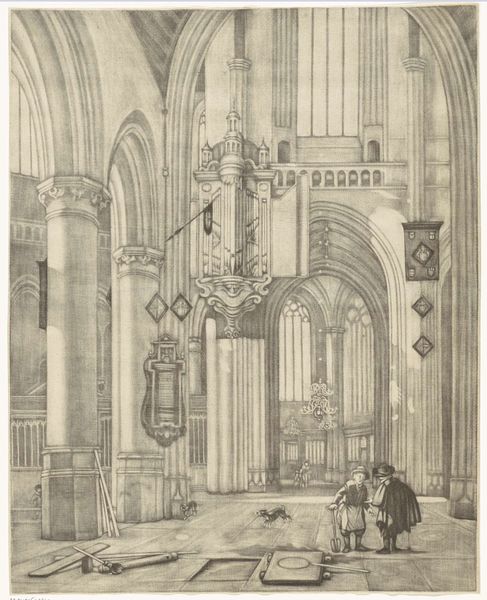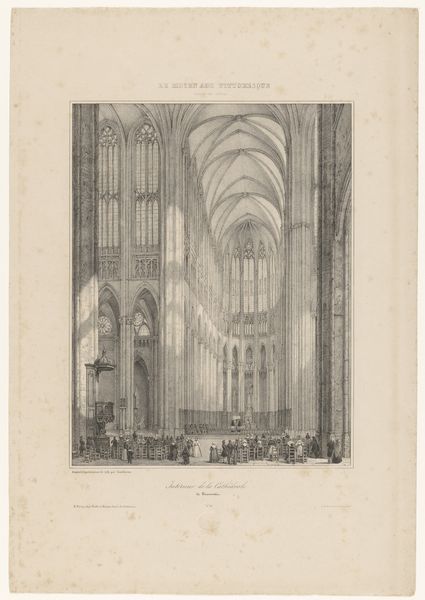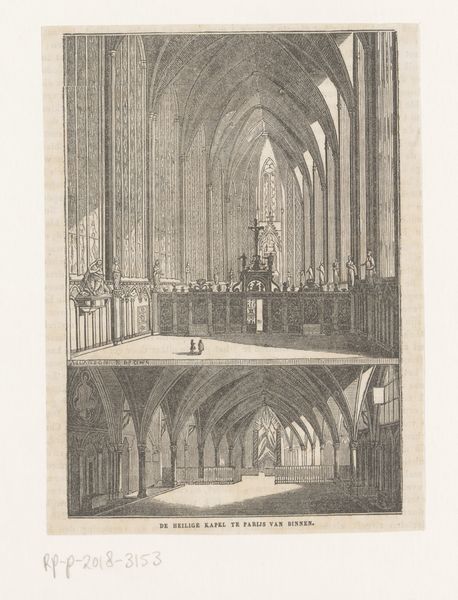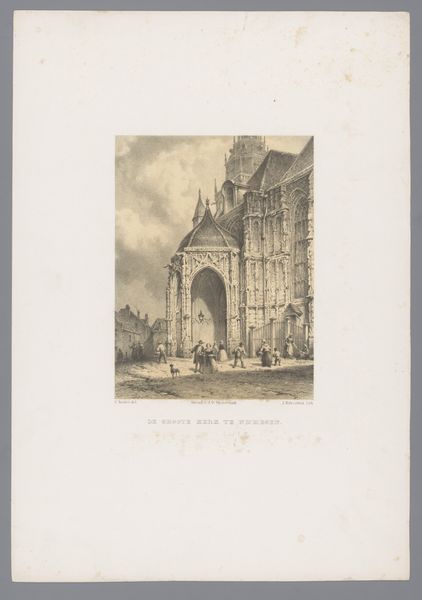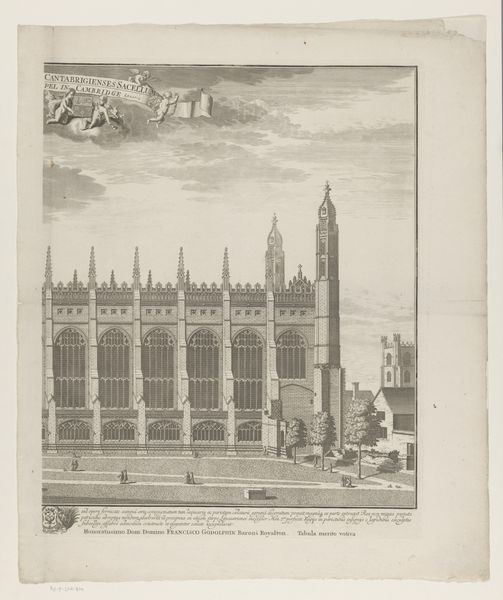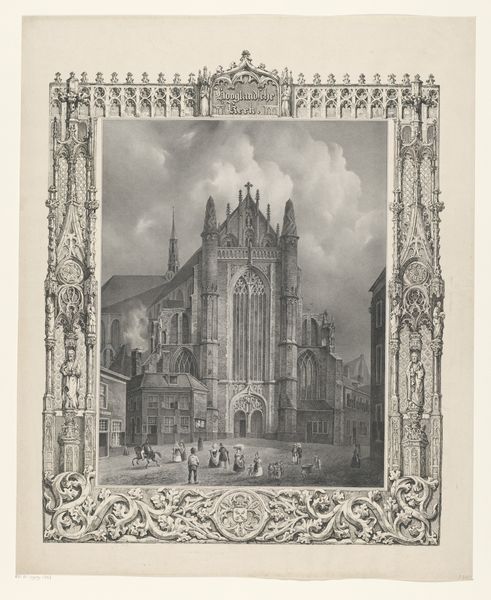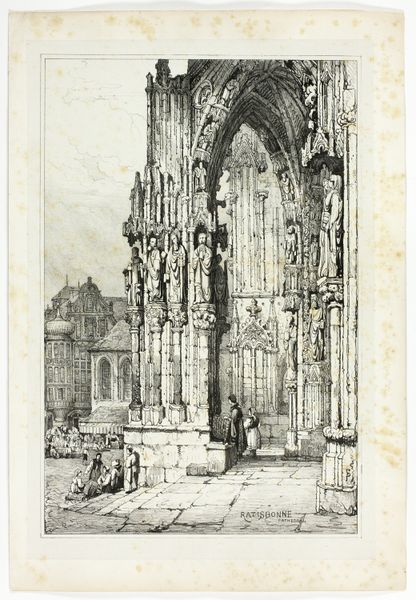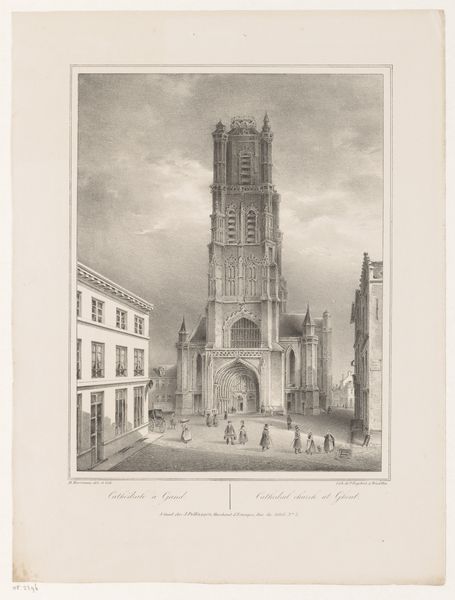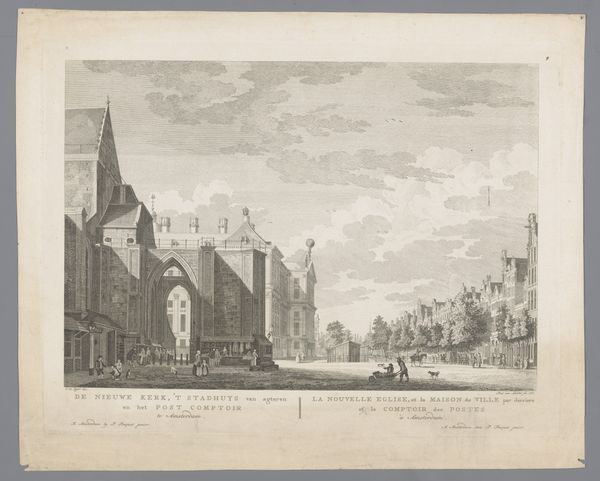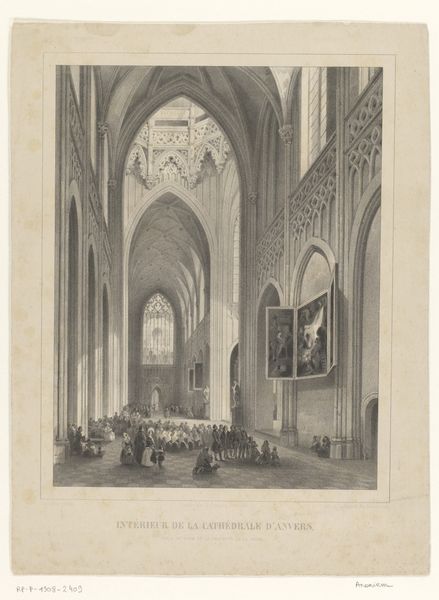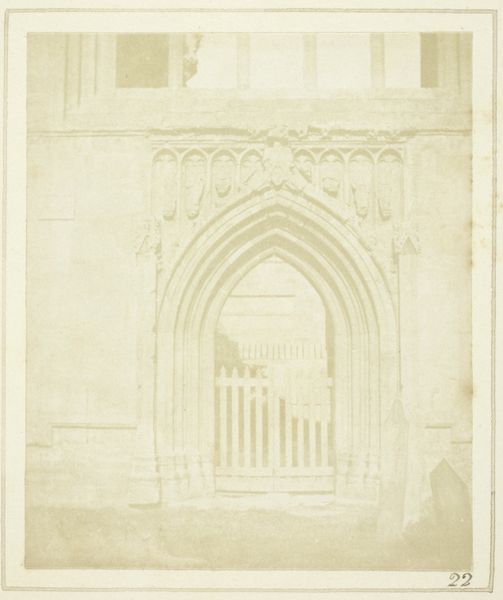
drawing, pencil, architecture
#
drawing
#
neoclacissism
#
landscape
#
pencil
#
architecture
Dimensions: overall: 44.7 x 25.5 cm (17 5/8 x 10 1/16 in.)
Copyright: National Gallery of Art: CC0 1.0
Curator: John Carter's pencil drawing, "The Erpingham Gate, Norwich," created in 1791, offers us a detailed rendering of architecture infused with elements of Neoclassicism. What's your immediate response to it? Editor: It strikes me as rather severe. The monochrome palette, combined with the imposing scale of the gate, gives it a stoic and perhaps even somber quality. The precision in line work, though impressive, amplifies this sense of formality. Curator: It's crucial to understand that this depiction of the Erpingham Gate isn't just about architectural representation. It exists within a specific social and political milieu. Carter, working in the late 18th century, was capturing a very specific moment in Norwich's history, marked by its economic and social transformations. The imposing structure can be seen to symbolize the power of the church in the context of shifts in class structure at that time. Editor: I can see that layer of interpretation, but, visually, the meticulous detail with which he renders the gothic ornamentation–the statues, the carvings – serves a primarily aesthetic function. Consider how the artist plays with light and shadow, creating depth and drawing our eye toward the cathedral visible through the arch. The framing device established here allows our eyes to gaze down that dark path. Curator: Yet that precise rendering also provides a valuable record of architectural style during a time when antiquarian interests were growing. The gate is presented in the context of the lives of those who use it and walk nearby it: Note the figures in the foreground. The image becomes a lens to explore Norwich society. Who is included in this landscape, and who isn't? Editor: Fair point. The figures animate the scene, yet I still maintain that the drawing’s strength lies in Carter’s mastery of line and composition. Look at the repetition of the arch form and how this reinforces the overall harmony. Even the figures are subservient to that architectonic logic: The people almost serve as a punctuation point to indicate the magnitude of the structures in relation to them. Curator: Ultimately, this image speaks volumes about the intersections of power, religion, and society. It allows us to consider not only the aesthetic choices of the artist, but also how cultural norms are solidified. Editor: Yes, I do admit that you make a great case for considering its social underpinnings; however, as a work of art it does offer quite a sophisticated balance between the architectural grandeur and artistic technique.
Comments
No comments
Be the first to comment and join the conversation on the ultimate creative platform.
